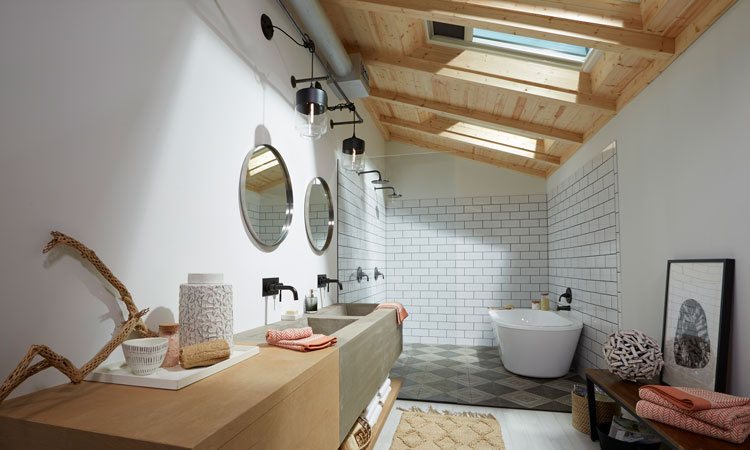Natural light is a crucial element in home design that can transform a space’s ambiance, making it feel warm, welcoming, and comfortable. Harnessing the power of sunlight not only enhances the aesthetic appeal of your home but also promotes a more sustainable and energy-efficient environment. In this article, we will delve into various strategies to optimize natural light in your home, with a focus on improving your overall well-being.

The Importance of Natural Light
Enhancing Well-being
Natural light goes beyond brightening your living space; it plays a pivotal role in your physical and mental health. Exposure to sunlight boosts the production of serotonin, a hormone associated with mood improvement. Additionally, natural light helps regulate your circadian rhythm, contributing to better sleep quality. Furthermore, it has been shown to increase productivity and creativity. Therefore, optimizing natural light in your home is more than just an interior design choice; it’s an investment in your well-being.
Choosing the Right Windows
Window Size and Placement
Selecting the appropriate windows is the first step in optimizing natural light in your home. Consider the following factors:
Window Size
Larger windows allow more light to enter your space. Opt for strategically placed windows, such as south-facing ones, which receive an abundance of sunlight throughout the day.
Window Style
Choosing windows that complement your home’s architectural style can enhance its visual appeal while optimizing natural light.
Energy Efficiency
Ensure your windows have low-emissivity coatings to prevent heat gain in the summer and heat loss in the winter. This not only maximizes natural light but also reduces energy costs.
Use of Window Treatments
Sheer Curtains
While natural light is vital, it’s essential to maintain some control over it. Window treatments offer an excellent solution for balancing openness and privacy. Consider using sheer curtains that allow ample light to filter through while preserving your privacy.
Blinds or Shades
Blinds or shades can be adjusted to control the amount of light entering the room. This provides flexibility in managing natural light according to your preferences.
Window Films
Frosted or stained glass films add a touch of elegance while diffusing light for a softer, more even glow. They offer both privacy and an aesthetically pleasing solution for optimizing natural light.
Reflective Surfaces
Using reflective materials in your home can significantly enhance the distribution of natural light. Mirrors are a classic choice; when strategically placed, they can bounce sunlight around a room, making it feel more spacious and brighter. Similarly, incorporating shiny or glass decor elements can help scatter light, creating a radiant atmosphere.
Choose Light Colors
The color palette of your interior spaces can significantly impact how natural light is harnessed. Light colors, particularly white and pale hues, reflect light and make a room appear more luminous. Consider painting your walls, ceilings, and furniture in light shades to optimize natural light.
Minimalistic Furniture and Decor
To allow natural light to flow freely throughout your home, opt for minimalistic furniture and decor. Bulky and dark pieces can obstruct the passage of light, making your space feel cramped. Choose streamlined and airy furniture that complements your design aesthetics while optimizing natural light.
Open Floor Plans
Open floor plans are a popular architectural trend that promotes the flow of natural light. By eliminating unnecessary walls and barriers, you ensure that light can travel freely from one room to another, brightening your entire home.
Skylights and Sun Tubes
Skylights
Skylights and sun tubes are excellent additions to optimize natural light, especially in areas where conventional windows may not be practical, such as bathrooms or hallways. They introduce sunlight from above, making spaces feel more inviting and connected to the outdoors.
Indoor Plants
Introduction of Greenery
Indoor plants not only add a touch of nature to your home but also interact harmoniously with natural light. Placing potted plants near windows or in well-lit areas enhances the aesthetic appeal while creating a soothing atmosphere.
Smart Lighting Solutions
To optimize natural light, consider installing smart lighting systems. These systems can automatically adjust the intensity of artificial lighting in response to the available natural light, ensuring your spaces are well-lit without excessive energy consumption.
Outdoor Space Considerations
Incorporating outdoor elements that maximize the entry of natural light can further enhance your home’s illumination. Consider the following ideas:
Porches and Verandas
Extend your living space outdoors, creating areas that transition seamlessly from indoors to outdoors, maximizing natural light exposure.
Sliding Glass Doors
Installing sliding glass doors leading to outdoor spaces can flood your interior with sunlight.
Conclusion
Harnessing the power of natural light in your home is not just an aesthetic choice; it’s a lifestyle enhancement. It can improve your mood, productivity, and overall well-being while reducing energy costs. By selecting the right windows, using window treatments effectively, and making conscious design choices, you can create a bright, welcoming, and healthy living space that you’ll love to call home. So, open those curtains, embrace the sunshine, and let the natural light transform your home into a radiant sanctuary.